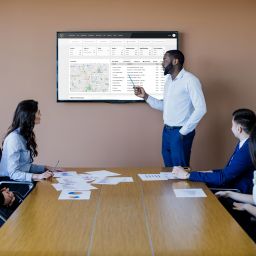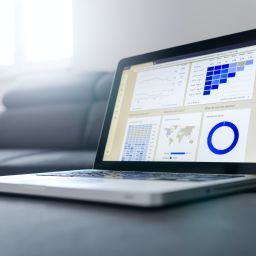When 38% of employees admit to arriving late for work at least once a month, it’s evident that a time clock system that precisely measures when employees start and complete their working day isn’t something businesses can afford to overlook. According to research, the accumulated minutes missed due to tardy workers costs California alone $1 billion every year.
If you’re thinking about introducing time clock software at your company, or if you’re one of the 38% of businesses that still use physical time cards and believe it’s time to change, this feature checklist will help you select a time clock system that’s appropriate for the modern labor market.
Electronic records for easier data handling
Verifying when employees begin and conclude their workday is just the beginning of what time and attendance data can do. This information is at the heart of your HR processes, so you need a time clock that interfaces with other departments and systems, from payroll to tax compliance.
Companies who continue to use outdated time clock systems are losing ground in this area. Copying time and attendance data into payroll or accounting software not only adds additional hours of work, but it also increases the chance of payroll disparities, which can lead to costly legal exposure. In 2021, the Department of Labor filed over 24,700 back pay compliance actions, totaling $230 million in unpaid wages.
Utilizing specialised time and attendance software to automatically collect and update data as employees arrive and leave means more stringent labour compliance. It also allows you to combine that data over time, producing internal reports on productivity and efficiency to help you make future business decisions.
Automatic verification for efficient clocking in and out
When employees are late, shift-based firms suffer. It is also critical to manage shift changes as easily as possible, and a time clock system that generates bottlenecks while employees wait to clock in and out adds to your problems rather than solving them. If managers must additionally spend time transcribing attendance data or double-checking timesheets, your company is losing important hours every day at all levels.
Manual time clock systems that use punch cards or paper timesheets will suffer once again in this area. Employees spend time punching buttons or digging in their wallets and bags for whatever they need to satisfy the time-entry criteria, which might slow down your operation.
When it comes to speed, the most recent biometric time clock systems offer a significant advantage. Workers merely need to provide a fingerprint or face a camera to begin working. Managers benefit from reliable time and attendance data that is ready to use as soon as employees walk through the door. Smartphone apps can speed the process up even more, allowing personnel to clock in using their own phone as they arrive.
Precise entry tracking for spotless payroll
This one may seem apparent, and you might think every time clock system being used today would be able to correctly document the precise time workers arrive and leave, but anything that relies on employees or managers manually inputting hours worked is prone to inaccuracies.
As many as 80% of employers in the United States report having to correct errors in manually submitted timesheets, such as when employees forget to clock in or out or when information is copied across by hand. That’s a major problem when you consider that one out of every ten businesses still uses erroneous paper timesheets or offline spreadsheets.
When shopping for a new time clock system, at the very least, invest in a digital point of entry that automatically records the exact time employees start and conclude their shifts so management can readily compare them to their allotted hours. Some WFM software includes mobile GPS tracking for this purpose, allowing you to create a geofenced area around your business that employees must enter in order to clock in on their phone. If there is ever a dispute over hours worked or wages paid, you must have incontrovertible data. If your main protection is a simple spreadsheet or a drawer full of handwritten paper documents, you’ve significantly weakened your position for no reason.
Future-proof your time clock system for the best return on investment
The labor market is rapidly evolving, and you need a time clock software that can adapt and adjust to your needs in the near future. Many of the systems now in use by businesses in the United States are obsolete and will only become more inefficient over time.
It’s not enough to consider a time clock as merely an HR tool for tracking time and attendance. It is an integral aspect of your whole business and should be as up to date as any other critical system. Whatever method you choose to clock in and out employees, VigilinkIT provides cutting-edge app-based time clock solutions, extensive reporting capabilities, and the ability to scale and evolve with your organisation.

















